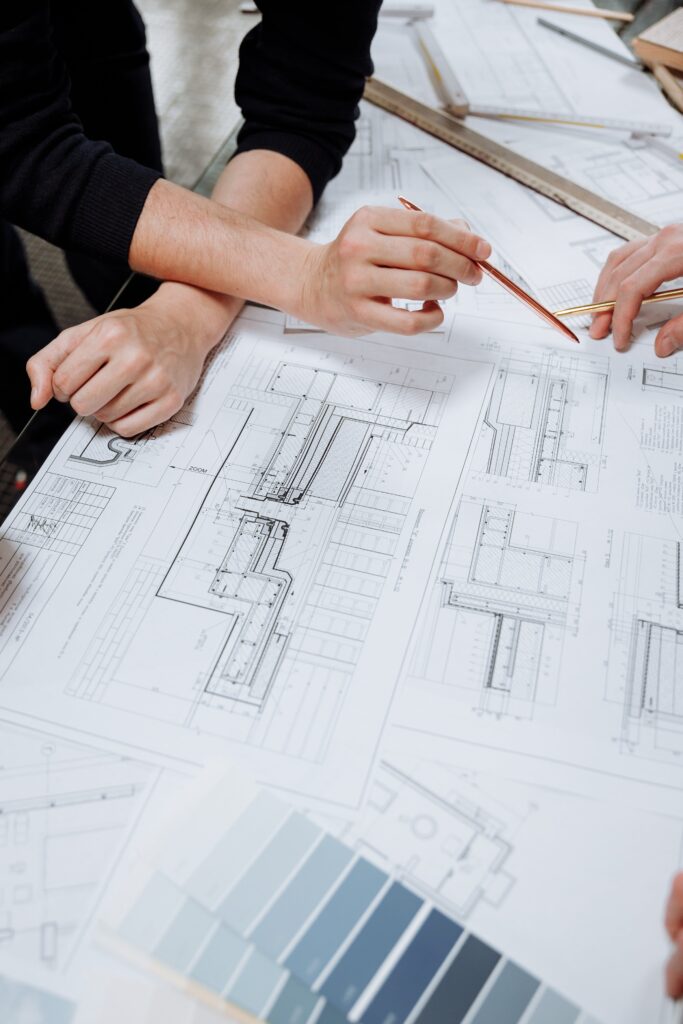Construction Services
Design Development
STEP 1
Contact Ridit Nirman Experts
STEP 2
Provide necessary information about your Construction plans
STEP 3
Get your Work Done hassle-free in a cost-effective manner.
INTRODUCTION
Design development is a pivotal stage in the construction and development process that bridges the gap between the initial concept and the final construction documents. It’s a creative and critical phase that involves refining and expanding upon the project’s conceptual design to create a detailed and functional plan. At Ridit Nirman, we understand the importance of design development in transforming ideas into reality. In this blog, we will explore the intricacies of design development and why it is an essential part of the construction and development process.
What is Design Development?
Design development is the phase of a construction or development project where the initial design concepts are further refined, expanded upon, and detailed to create a comprehensive and executable plan. This phase typically includes the following key activities:
Refinement of Conceptual Design: The conceptual design is reviewed and refined to ensure it meets the project’s objectives, budget, and functional requirements.
Detailed Space Planning: Space allocation, layout, and functional relationships are established, and room dimensions are specified.
Material and Finish Selection: Materials, finishes, and systems are carefully chosen, considering aesthetics, performance, durability, and budget constraints.
Systems Integration: All building systems, such as HVAC, electrical, plumbing, and structural components, are integrated into the design.
Cost Estimation: Detailed cost estimates are developed based on the design, which helps in budget management and cost control.
Why Design Development is Essential
Ensures Feasibility: Design development acts as a reality check, verifying that the initial design concept is feasible in terms of construction, budget, and regulatory compliance.
Refines Project Objectives: The phase allows project stakeholders to refine and clarify the project’s objectives and ensure that the design aligns with the client’s vision and needs.
Cost Control: By developing detailed design plans and cost estimates, design development helps in identifying potential cost overruns and making necessary adjustments.
Minimizes Construction Delays: A well-developed design reduces the likelihood of design changes during construction, minimizing delays and associated costs.
Facilitates Collaboration: Design development encourages collaboration among architects, engineers, contractors, and clients, fostering a deeper understanding of the project and its requirements.

RDIT NIRMAN
Our Approach
Our Approach to Site Analysis at Ridit Nirman
At Ridit Nirman, we consider design development as a crucial stage in bringing our clients’ visions to life. Our approach to design development is client-centric and detail-oriented:
Collaboration: We foster open and effective communication among all project stakeholders to ensure a shared vision and seamless integration of design and construction elements.
Feasibility Analysis: We conduct a thorough analysis to ensure that the design aligns with the project’s budget, schedule, and regulatory requirements.
Cost Management: Our team develops detailed cost estimates and provides value engineering options to keep the project within budget.
Detailed Documentation: We create comprehensive design documents that include detailed drawings, specifications, and material selections to guide the construction phase.
Risk Mitigation: Identifying potential design issues and addressing them during the design development phase helps reduce the risk of costly changes during construction.



